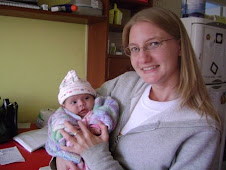
over the mountians

and into the jungle we go.

Around here though, its know as The Chapare. Many people have told me about the climatic differences between Chapare and Cochabamba but this was the first time I experienced it for myself. We left Coch at about 7am and drove 4hours across the mountians into Chapare. By 11 o´clock we were hot, muggy, and swatting at millions of little bugs wanting to suck our blood.
For those of you who don´t know, my team is in the midst of building 2 more orhapange homes in the Chapare. We make a trip into this area at least once a month to bring workers, supplies, and money to the construction sites. This was the first time since I arrived in Coch that I was able to go on the trip. I was just along for the ride but 3 of my teams 4 interns went with us to stay in Chapare and work construction for the next week or so. So here are some pictures of the home #1 (we didn´t have time to go to the second site).
This is the front and back of the house


This is one of the inside rooms.

At the moment, the plumbing has not been installed.
This is the shower.

And this is the house the our contruction manager Remberto lives in with his family.

And now for some fun pictures of me enjoying the jungle.
This is me and a little bitty parrot. He´s cute I wanted to take him home with me.

This is an alligator who at one point in time was alive but is now stuffed but very much alive looking!

And finally we have me posing with a banana tree in one of the many banana plantations.
 .
.At one point of the trip we had in our car 3 missionaries, 1 child, 1 SEDEGES social worker (think DCFS), 1 special agent of the DEA (Drug Enforcement Agency), and 1 tree grower. Only in the Chapare! I actually learned a lot more about coca on this trip as the Chapare grows a lot of coca. Our friend from the DEA goes to the international church in Coch but spends one week a month at the Chapare base. I live just 1 block away from the main base in Coch. This is what I learned:
1. It takes 400 pounds of coca leaf to make 1/2 pound of cocaine.
2. The DEA finds 80 to 100 cocaine labs every week in the Chapare.
3. The coca leaf in Chapare is only good for making cocaine and is not good for making tea or for chewing for medical purposes (a legit and legal way of growing and selling it).
4. Legally, a family can grow coca in an area 40 meters by 40 meters.
5. After the leaves are picked they have to dry in the sun for 3 days.
6. Most of the cocaine made in Bolivia ends up in Europe, not North America.
And thats it for this trip to Chapare!



No comments:
Post a Comment